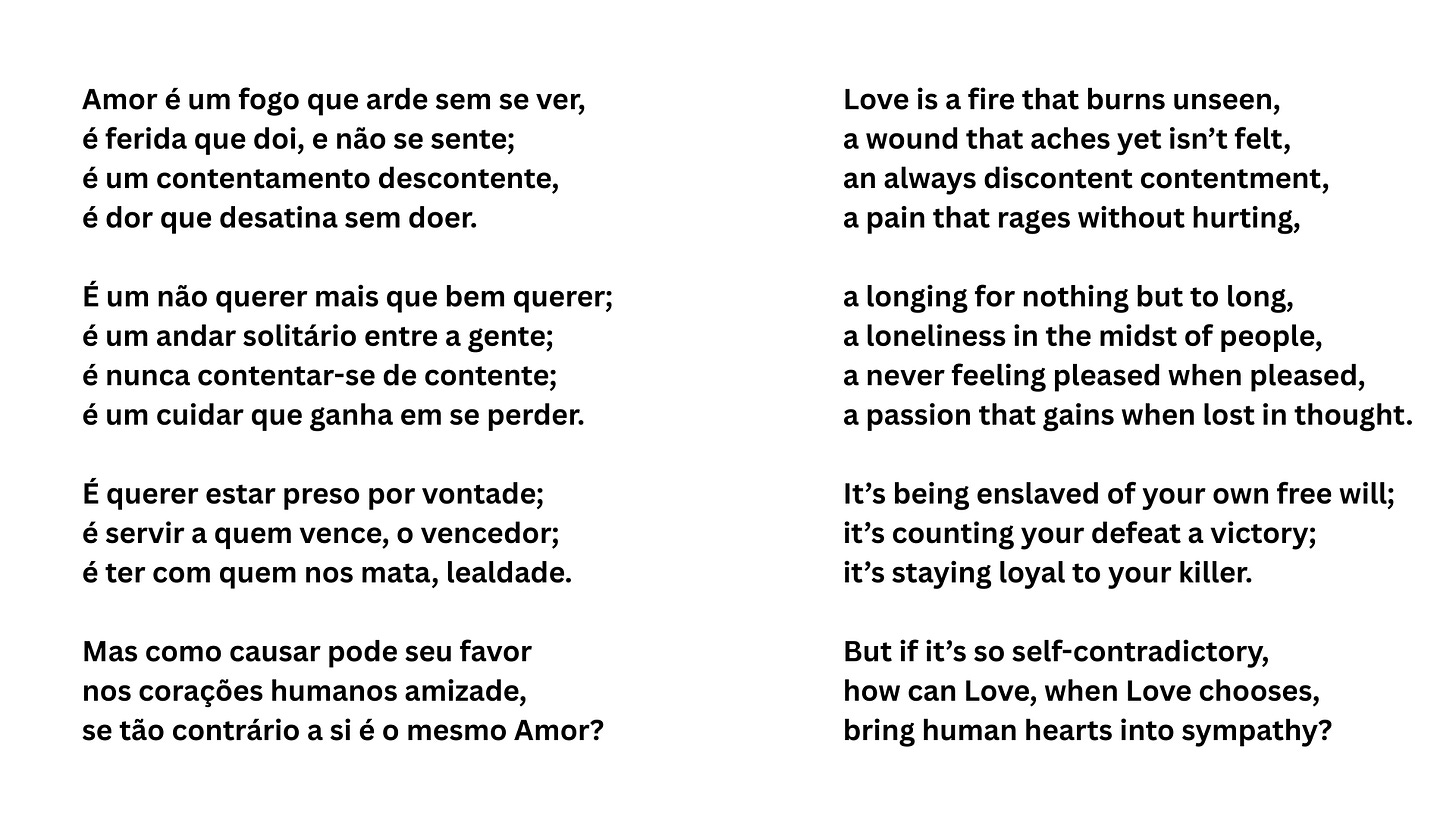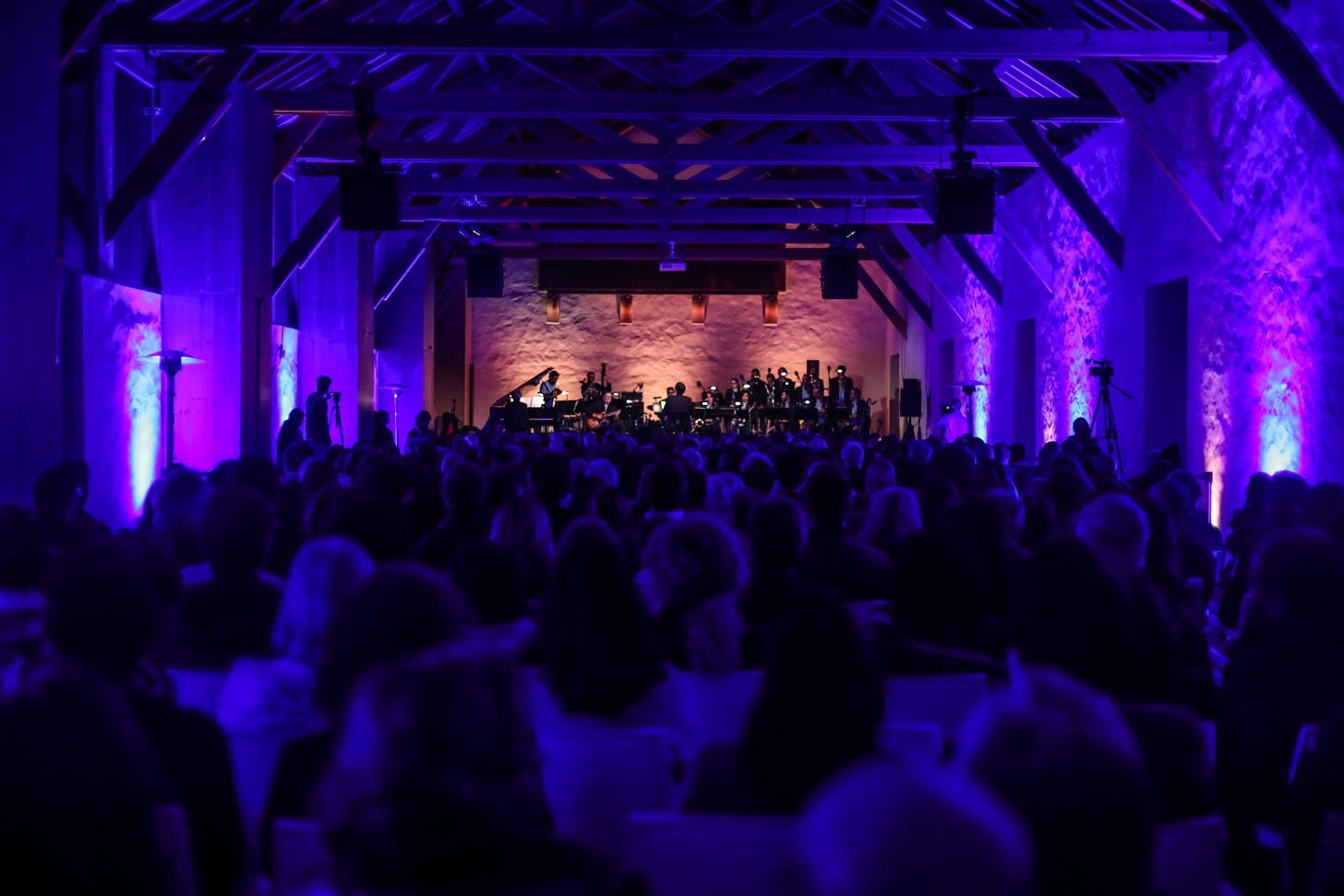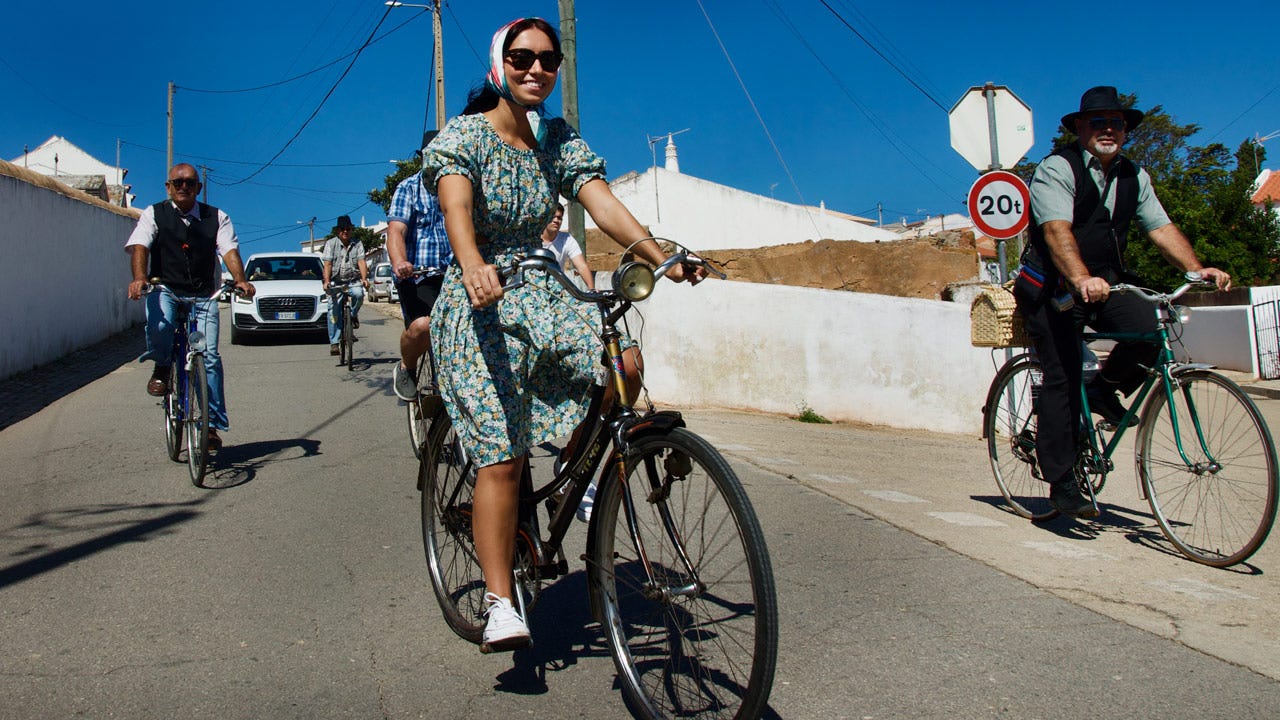Friday Briefing: Why read Camões 500 years later?
Good morning and welcome to PORTUGAL DECODED. This week's celebrations of the national poet's 500 birthday exposed deep divisions over his legacy, showing why he remains central to today’s politics.
TALK OF THE TOWN

If you enjoy reading PORTUGAL DECODED, please consider donating to keep it free and independent – your generosity means everything!
POLITICS
In his last Portugal Day speech, President Marcelo Rebelo de Sousa highlighted the country’s diverse heritage and warned against extremism and racism: “No one can claim to be more Portuguese than another” (More).
Later, Chega leader André Ventura vowed to topple any government seeking reparations for Portugal’s former colonies, accusing the political establishment of ignoring what he called “the problem of excessive immigration” (More).
SOCIETY
That very night, an actor was assaulted by neo-Nazis outside a Lisbon theatre just before he was to play poet Luís de Camões, sparking outrage and condemnation. A protest against far-right violence is scheduled for June 15 in Lisbon (More).
Yesterday, the Government approved its new program with 10 reform priorities, including tax cuts, state reform, housing, and defense investment, set to be debated in Parliament next week with expected approval (More).
ECONOMICS
Novobanco’s sale could be decided within days, with bids from Spain’s CaixaBank and France’s BPCE under review. If rejected, a partial stock market listing remains a likely alternative amid political and regulatory pressure (More).
Political leaders gathered at the Jerónimos Monastery on Thursday to celebrate Portugal’s 40 years of EU membership, offering both praise for the country’s economic transformation and candid reflections on missed opportunities (More).
CULTURE AND SPORTS
Lisbon has confirmed that the long-delayed Memorial to Enslaved People will be built at Ribeira das Naus, eight years after it was approved through a public vote and faced multiple location setbacks (More).
In case you missed it: Portugal won the UEFA Nations League final, after defeating Spain in penalty kicks 5-3. On Monday, hundreds of fans gathered at Lisbon’s airport to greet the team members who made the journey from Munich (More).
If you enjoy reading PORTUGAL DECODED, please consider donating to keep it free and independent – your generosity means everything!
DECODER
Why is Luís de Camões considered a national symbol?
To many, Luís Vaz de Camões embodies the very essence of the Portuguese soul. Writing during the height of Portugal’s Age of Discovery, Camões elevated the Portuguese language, proving its literary might matched the nation’s global ambitions. In addition, his work explores the themes of fate and fatalism, what later became known as fado, the deep-rooted sense of destiny central to Portuguese identity. Camões’ life mirrored the duality he wrote about: he embodied both the glory and suffering that define Portugal’s history and people, witnessing achievements that surpassed the imagination of previous generations. For these reasons he has been described by Harold Bloom as the “transcendent genius of his nation,” as one of the most sublime lyric poets of the Renaissance, often compared to Dante, Petrarch, and Shakespeare.
Why is his life so legendary?
When Camões hailed the Portuguese heroes in Os Lusíadas (The Lusiads), as those who left the “western Lusitanian shore” to give “new worlds to the world”, he could not have foreseen that he, too, would become immortalized as one who “by valiant deeds are freed from the law of death.” Yet little is known for certain about his life: records are scarce, and most of what we know is speculation. We don’t know for sure where he was born, if he studied in Coimbra, or if he moved in courtly circles. Still, his life is legendary: a bohemian youth, exiled for brawling, he lost an eye in battle in Ceuta, voyaged to India, Macau, and survived a shipwreck in Cambodia clutching the manuscript of The Lusiads, and endured jail, poverty, and disgrace. Back in Lisbon, he recited his epic to King Sebastian, who ordered its publication in 1572 and granted Camões a modest pension. Stricken by plague, he died in 1580. However, his remains were lost in the great Lisbon earthquake of 1755, making it highly likely that the bones placed in his tomb at the Jerónimos Monastery in 1880 belong to someone else.
What is The Lusiads all about?

If the Greeks had The Odyssey and the Romans The Aeneid, the Portuguese have The Lusiads by Luís de Camões. Like Homer and Virgil, Camões sought to immortalize his people’s greatness. His epic glorifies Vasco da Gama’s groundbreaking voyage to India, which opened the sea route between Europe and Asia. Blending history, mythology, and poetic imagination, Camões presents a fantastical vision of 15th- and 16th-century exploration, where Portuguese sailors confront gods, monsters, and the unknown. Written in ten cantos and over 1,100 stanzas, The Lusiads elevates Portuguese achievements above those of antiquity. Camões boldly claimed that not even the ancient gods could obstruct Portugal’s destiny. In his vision, Lisbon stood alongside Athens, Rome, and Jerusalem, equal in historical and cultural grandeur. His work not only celebrates da Gama but also enshrines the Portuguese spirit of resilience, ambition, and discovery on the world stage.
Did Camões only write The Lusiads?

No. Camões’ work spans three main genres: lyrical, epic, and theatrical. His lyrical poetry was immediately acclaimed, especially his cantos, elegies, and redondilhas. He mastered the art of gloss, bringing spontaneity, delicate irony, and elegance to traditional courtly forms, elevating them to new heights. His verse also captured joy and lightness with remarkable ease. His epic masterpiece, The Lusiads, stands as the pinnacle of Portuguese literature, blending classical grandeur with national pride. In theater, Camões wrote three comedies in the auto tradition: Filodemo, Anfitriões, and El-Rei Seleuco, though the authorship of the latter is debated. While he considered comedy a minor genre, Camões brought innovation by shifting humor from character caricature to action and structure, paving the way for the renewal of Portuguese comedic theater.
Is Camões a figure of the political left or right?

Depends who you ask. The best answer is that Luís de Camões defies simple political classification. His work transcends time and ideology, earning him admiration across the political spectrum. To monarchists, Camões represented the grandeur of the Portuguese Empire, his verses celebrated the bravery of navigators and the nobility of conquest. Liberals saw in him a voice of individual freedom and resistance, his tumultuous life echoing their ideals of reform and autonomy. Communists embraced him as a poet of the people, denouncing injustice and inequality while expressing pride in the past and hope for a fairer future. Republicans identified him as a forerunner of equality and fraternity, capturing the aspirations of a nation. Even the authoritarian Estado Novo regime co-opted Camões, rebranding June 10th in 1944 as the “Day of the Race” to promote colonialism, nationalism, and racial supremacy. Today, in an era of global ties, Camões has taken on yet another meaning, as a unifying cultural icon for Portuguese speakers across the globe. His legacy continues to spark debate, but also builds bridges across continents, cultures, and ideologies.
TIPS OF THE WEEK
Lisbon
Julião Sarmento Pavillion
Since last week, there’s a new museum in Lisbon: the Julião Sarmento Pavilion, a space dedicated to the artist’s own private collection of art. Indeed, Julião Sarmento was not only one of the most influential artists of his generation, he was also a passionate collector, a generous collaborator, and a friend to many other artists. The Pavilhão Julião Sarmento embodies his spirit, honoring his wish to create a space where his collection could live in a place of proximity between artists, audiences, researchers, and communities, with a program that goes beyond temporary exhibitions. Its inaugural exhibition, Take 1, curated by Isabel Carlos, draws on the metaphor of a film’s first take: a beginning filled with possibility. Eighty-eight pieces have been chosen for the first display including Marina Abramović, Ernesto Neto, Robert Morris, Juan Muñoz, Cristina Iglesias, Rui Chafes, Richard Long, Lawrence Weiner, Ângela Ferreira, John Baldessari, and Rita McBride.
Porto
What’s missing: architecture and jazz in democracy
On June 21, Casa da Arquitectura will host a special event, blending architecture and jazz to reflect on Portugal’s cultural evolution since the 1974 Revolution. Partnering with Orquestra Jazz de Matosinhos (OJM), the programme includes a morning workshop (10:00–12:00) on building sound artefacts from recycled materials. At 3:30 PM, curators Jorge Figueira and Ana Neiva lead a tour of the exhibition “What is missing. 50 years of Portuguese architecture in democracy,” exploring post-1974 architectural works. A 5:00 PM discussion at C.A.R.A. (an innovative recording studio, performance center and research facility) features jazz researcher João Moreira dos Santos and the curators on big-band music post-Revolution. The day concludes with a 6:30 PM concert by OJM, directed by Pedro Guedes, showcasing Portuguese jazz orchestra works, including premieres by João Pedro Brandão and José Pedro Coelho.
Budens
Vintage Bicycle Ride
Budens in Vila do Bispo celebrates the 10th edition of its beloved Vintage Bicycle Ride (Passeio de Bicicletas Antigas) on Sunday, June 15. Organized by the parish council, this quirky nine-kilometer ride starts at 9:30 AM from Centro Escolar de Budens, winding through scenic coastal villages like Figueira and Salema. Open to all ages, participants are encouraged to dust off their oldest bikes and don vintage attire. The event culminates with live accordion music by Nuno Duarte and a traditional Algarve lunch featuring papas de xerém (corn porridge with seafood). Co-hosted by Vila do Bispo council, Rodas de Viriato, and Barão de S. Miguel Recreational Society, registrations closed June 11 via email (geral@freguesiadebudens.pt) or online form. A decade in, this ride remains a testament to community spirit and nostalgia on two wheels.








I learned so much in this post, and I always enjoy having the option to read more in-depth about the briefs from each section, muito obrigada! (Your post about Portuguese wine grapes is one of my favorites, with the explanations and colorful maps and charts!)
I have a reader nerd question: could you recommend a (short) book list in English, Portuguese, or bilingual of works by Camoes? I was really moved by the poem and its translation by Richard Zenith in your post. Thank you so so much!